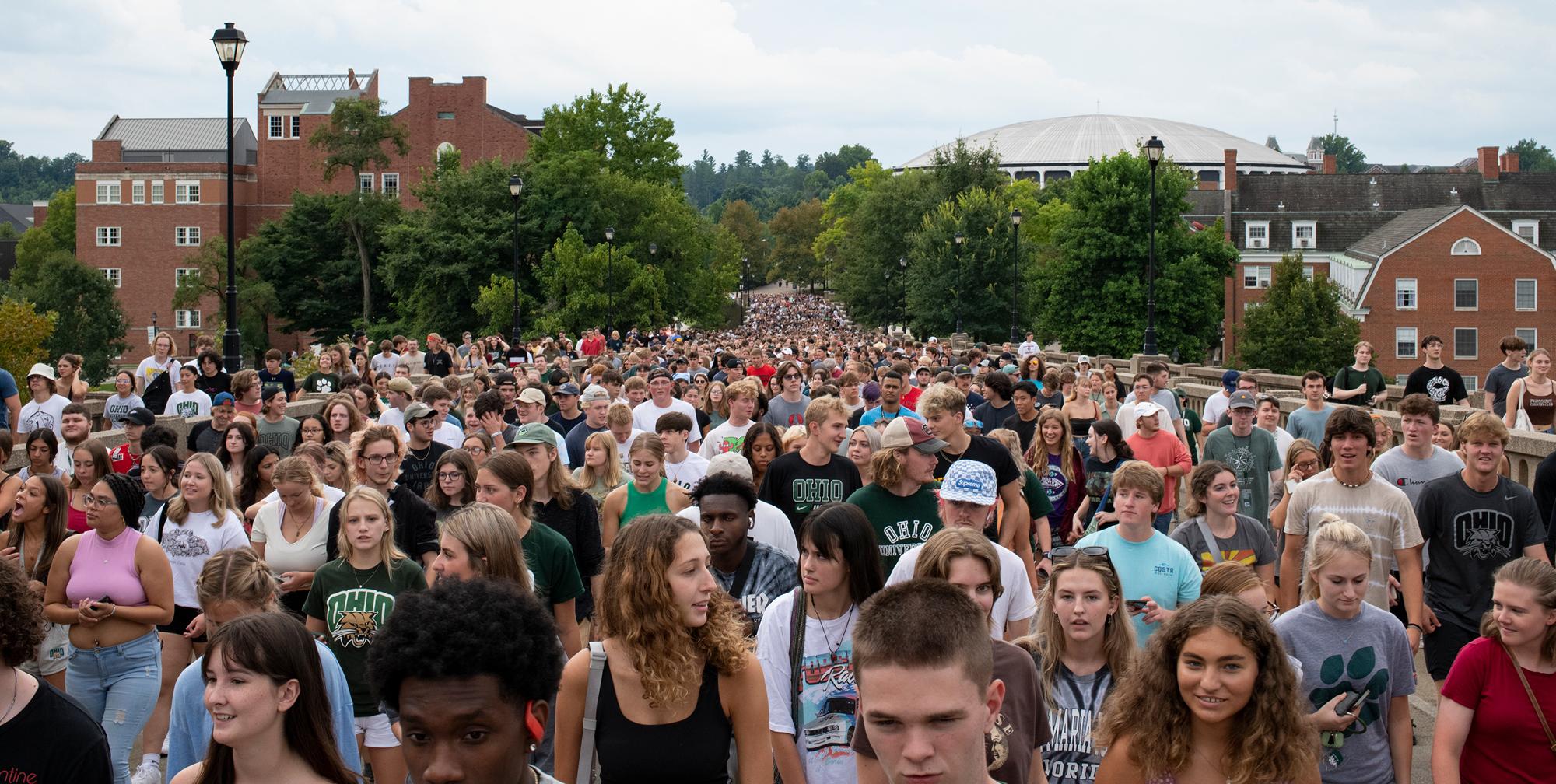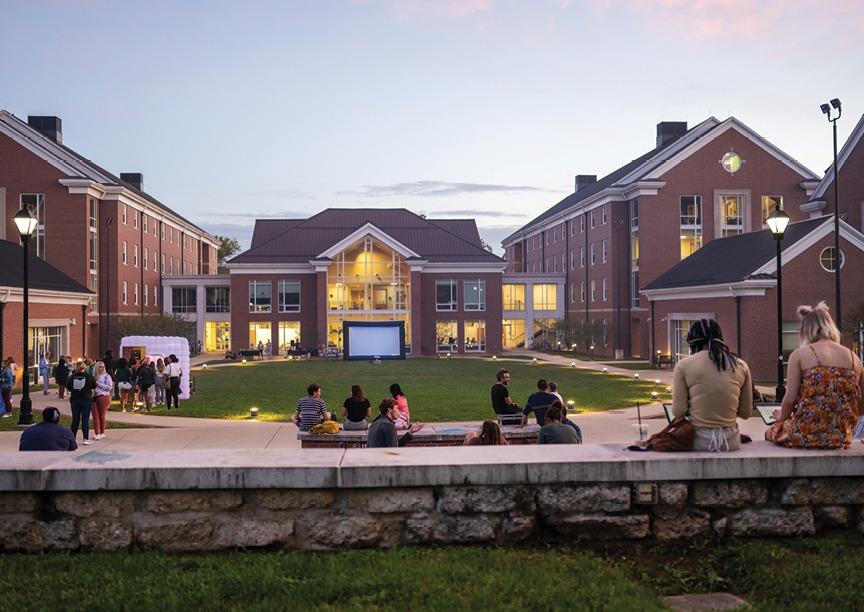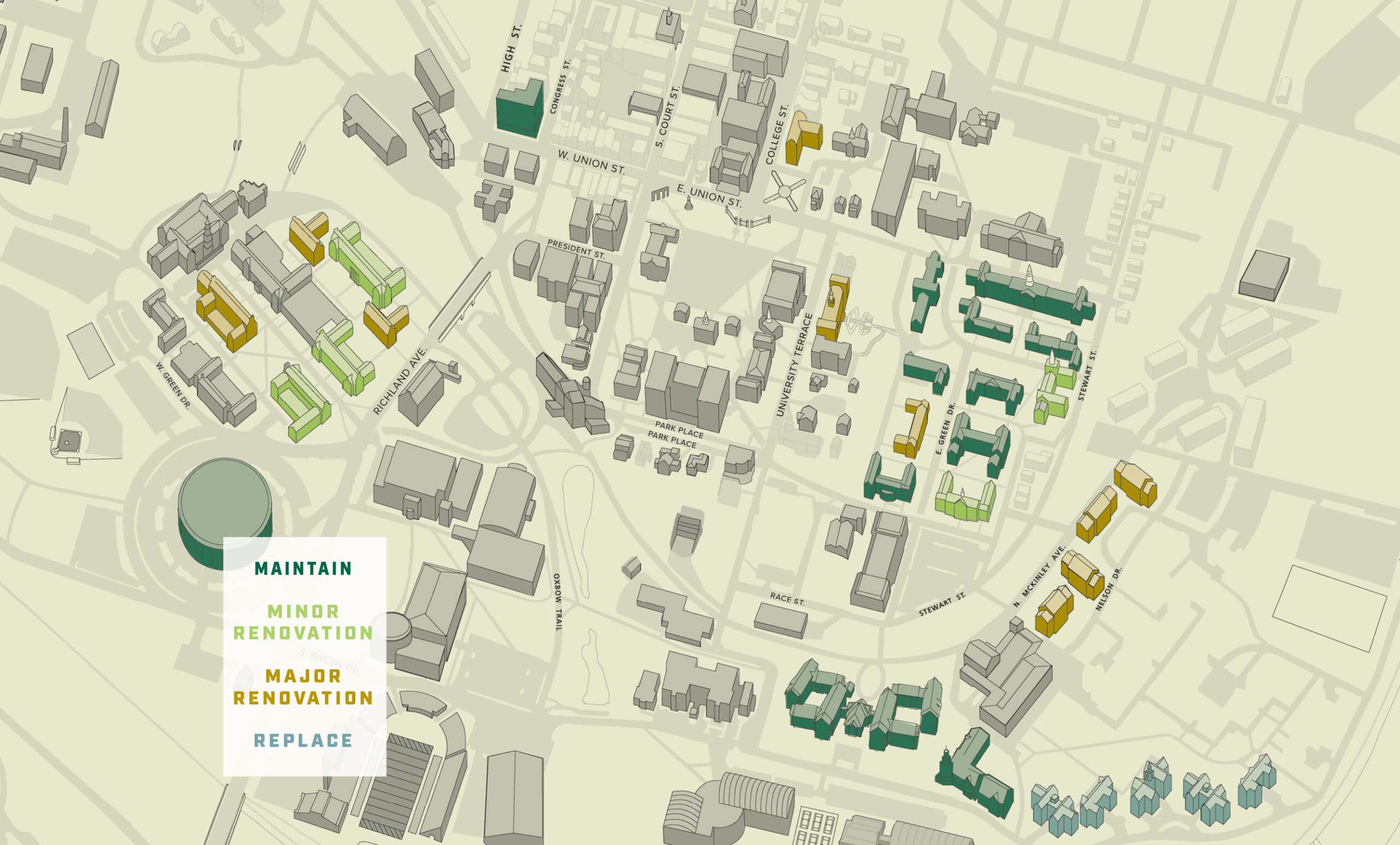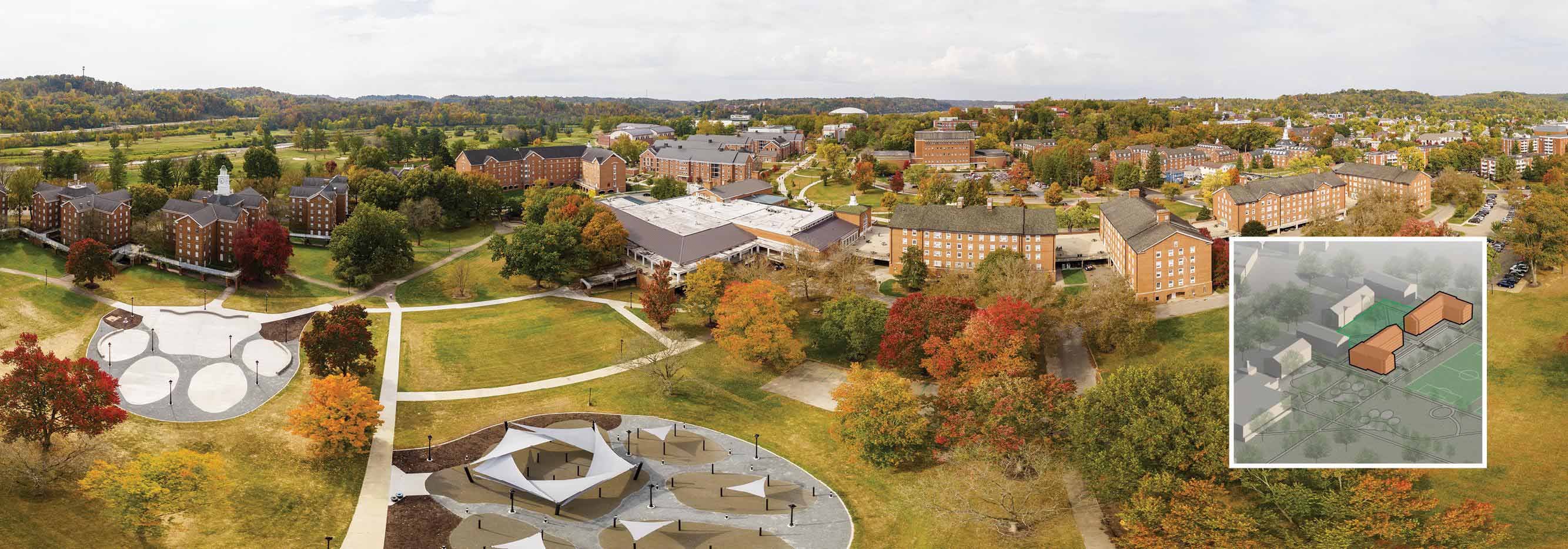

Res Halls Reimagined
Ohio University dusts off its Housing Master Plan and dives into designing a more connected community
Robin Oliver | April 3, 2023
Share:
Hip coffee shops with free Wi-Fi and organic juices. Lobbies with smartphone charging stations and cozy lounge furniture. Easily accessible private space for virtual meetings and collaborative study rooms with wireless conferencing for remote participants. Parks with water features or fire circles and solar-powered hammock stations.
These are no longer the amenities we expect only at Meta’s Bay Area headquarters or high-end suburban apartment complexes. Rather, we’ve made these once-coveted comforts the new status quo. We were halfway there before a pandemic pushed us into an even more connected world. Now, elementary school children across the country carry a computer in their backpack, and homes are set up with multiple offices for mom, dad and the kids to be able to take meetings online. We have Wi-Fi in our cars, order lunch via an app to avoid lines and expect to have access to an outlet—even while waiting in the lobby of our dentist’s office.
As today’s students and families consider their on-campus residence halls, their expectations match this new high-tech, high-amenity reality. Sure, there are a few Gen-X parents who still romanticize those metal bunk beds in cinderblock dorm rooms and hallway bathrooms that demanded flip flops for shower time as a college-age right of passage. But, their Gen-Z children roll their eyes at dad, get out their phones and check the download speed in the building during the tour of the residence hall. Then, they scan the lobby in hopes of spotting a coffee bar.

Students enjoy yard games, treats and a movie on South Green as part of Homecoming festivities. Photo by Ben Wirtz Siegel, BSVC ’02.
If you’re an Ohio University alumnus and you’re thinking “But my dorm is still around, and it was much more like the former than the latter” then you understand why the University is embarking on the implementation of an aggressive Housing Master Plan to refresh or replace the majority of the portfolio of residence halls on OHIO’s Athens Campus over the next decade. First up is the design and construction of a new $95 million, 600-bed complex on South Green, approved by the Board of Trustees at its January 2023 meeting and now in the design phase.
Building on the last decade of progress
This plan picks up where the University left off from a 2011 Housing Master Plan that led to the construction of four new residence halls—Carr, Tanaka, Sowle and Luchs Halls—which opened in 2015. These new facilities set the tone for future construction and renovation. The buildings feature suite-style housing, with two rooms sharing one bathroom located in between. In the center of the four residence halls is a Living Learning Center hub where students can gather for social or study activities.
Additional investments from the 2011 plan were put on pause in 2018 as the University began to see declines in its incoming first-year class. Then the pandemic arrived, putting a stop to most major capital projects. But, fall semester 2022 brought the largest first-year class in Ohio University’s more than 200-year history, with so much demand for on-campus housing that OHIO contracted with a local apartment complex to add more rooms to its portfolio.
“Even before the arrival of the fall 2022 class, we began work to revive and refresh the master plan,” said Shawna Wolfe, associate vice president of University Planning. “We have always had a strong residential community at our Athens Campus that is a big part of our University identity. As we move forward, we want to make sure that we are continuing to drive that sense of community while also meeting the expectations of today’s students and ensuring all of our residence halls offer an equitable experience.”
The plan includes both new construction and major or minor renovations happening in parallel to expedite OHIO’s progress across the portfolio.

A connected community, in every way
One of the most important goals, Wolfe said, was to approach the residential portfolio as an extension of student learning space at the University. Designers envision a future in which there is more and more blurring of the lines between the classroom and dorm room—similar to the blurring we see between home and office today. That doesn’t mean that students won’t find places to rest and recharge, but rather that their residence halls will serve multiple needs—a place to rest, space for social gatherings, private rooms to take a virtual meeting or online class, study rooms to gather with friends, green space for learning or playing outdoors and, of course, access to food and drink to recharge.
Importantly, the plan embraces the development of community by continuing to avoid high-rise complexes and instead build smaller halls in building groups where students can more easily get to know their neighbors. New construction will focus on spaces that are close to the heart of campus to ensure connectivity with the academic core and dining options.
And these will be connected developments. Designers will consider access to outlets everywhere and smart displays for study halls to allow participants to join remotely. Green space will build on ideas such as the recently completed Paw Print Park, which features a solar-powered hammock garden for students to lounge in hammocks with laptops in hand, powered by the sun.
Balancing amenities with affordability
Delivering on these student expectations for connectivity and amenities, of course, comes at a price. The total cost of major renovations and new construction between now and 2030 is estimated to come in at $192 million. However, OHIO’s conservative approach between 2018 and 2021 left the University in a good position to invest in moving forward. The total cost of projects will be covered with residential housing reserves and an annual operating margin balanced by funds from Ohio University’s internal bank.
This plan doesn’t depend on unrealized student growth. Rather, it assumes a stable state of 4,000 first-year students annually, more than 400 fewer than the fall 2022 class. At the same time, by beginning with a 600-bed new construction project ahead of any significant demolition, the plan creates flexibility to reassess that steady state in 2026 when the new residence halls are anticipated to open before planned demolition in 2030.
The ultimate financial goal is to avoid passing the cost on to students, and the financial plan does not include any restructuring of student cost.

Pictured: Paw Print Park on South Green. Photo by Ben Wirtz Siegel, BSVC ’02 [Inset] A 600-bed complex on South Green is slated to open in 2026. Image courtesy of Brailsford & Dunlavey/Ayers Saint Gross
The next big build
The first, and largest, new construction planned is a 600-bed structure on South Green that will extend the complex adjacent to Pickering, Brown and Mackinnon Halls to open in 2026. This new build will allow OHIO to move forward with the removal of the residence halls known as “back South” —Hoover, Ewing, Wray, Dougan and True Houses.
These buildings opened in the late 1960s, and the construction style is out of date and in need of significant renovation. In addition to the renovation needs, students regularly express concerns with the lack of adequate lighting in the areas of these halls as well as the lack of sidewalk connectivity to some of the newer parts of campus. The plan currently calls for the removal of these buildings in 2030.
In addition, Pickering, Brown and Mackinnon, as well as nearby Crawford Hall, will be prioritized for major renovation. Other halls identified for major renovation include Bryan, Perkins and Voigt Halls on East Green, and Treudley, Ryors and Wilson Halls on West Green. Several more will be addressed with minor renovations, including updates of study space and restrooms.
“It’s exciting to be at the point and moving forward with new construction that is going to be transformational for our campus,” Wolfe said. “But, at the same time, we know from the last several years that this plan has to remain flexible. We’ll be ready to adjust if we need to in order to respond to changes in enrollments or student expectations, always with the goal of delivering on that sense of community that we’re known for.”
Featured image: Last fall, OHIO welcomed its largest first-year class in the University’s 219-year history. Photo by Dylan Benedict, BSVC ’22


